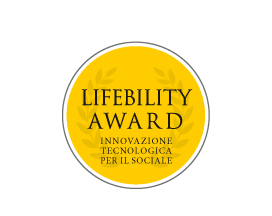LB8P_026_Progetto Sity
Per partecipare al concorso i progetti vanno inviati entro:
Progetto proposto da Chiara Vitaloni
Il Progetto Sity nasce dalla necessità di rispondere alla domanda “quali musei e aree archeologiche posso visitare nelle vicinanze?”. Concretamente si vorrebbe sviluppare un’app gratuita, innovativa e originale per mappare e, avvalendosi dell’uso del GPS, segnalare con una notifica all’user le zone archeologiche vicine, il percorso da effettuare per raggiungerle e avere informazioni adeguate su orari di apertura, biglietteria, cenni storici, curiosità archeologiche e ricevere gli appuntamenti che la realtà museale offre tramite le mostre e gli eventi. L’obiettivo mira ad applicare le nuove tecnologie informatiche all’ambito archeologico creando rapporti di multidisciplinarietà che da sempre hanno caratterizzato l’archeologia. La finalità del progetto è quella di conferire una più ampia visibilità alle piccole realtà museali che costellano il nostro Paese, spesso poco conosciute o non sufficientemente sponsorizzate, nel creare un rapporto proficuo fra turismo e territorio e nel rendere partecipe la collettività sugli eventi che hanno sede nei musei/aree archeologiche mappati. Sity può essere sfruttata da chiunque abbia uno smartphone o tablet dotato di GPS; a seconda dell’implementazione dell’app, potrà essere scaricabile dai maggiori Store (Play Store e App Store). Attualmente i turisti soddisfano questo bisogno tramite piattaforme online (Trip Advisor, pagine Facebook, blog e le pagine web dei musei) le quali forniscono informazioni non aggiornate costantemente o viziate e non scientificamente verificate (per quel che riguarda la divulgazione dei contenuti). All’applicazione si vuole anche associare il sito internet contenente, per il profilo di ciascun museo, un apparato bibliografico aggiornato corredato dagli articoli scientifici e dagli studi condotti sui materiali/siti/approfondimenti presenti. Ciò consentirebbe agli specialisti e agli accademici di creare un dialogo con il pubblico, evitando una ricerca elitaria per pochi addetti. Data l’ambizione e l’estensione temporale del progetto, il team necessiterebbe di figure professionali qualificate quali archeologi, app developers capaci di sviluppare per i sistemi operativi iOS + Android e web designer. Attualmente è presente solo l’archeologo (ovvero la sottoscritta) che si occuperebbe della sezione inerente i contenuti scientifici e la mappatura dei siti/musei. Finora la sottoscritta si è preoccupata di organizzare e gestire tutte le parti appena descritte, sviluppando (per quanto possibile) da autodidatta una bozza dell’app che è stata oggetto della Tesi di Laurea Magistrale in Archeologia e ha ricevuto anche il “premio Antonella Fiammenghi” (consistente in una targa di riconoscimento) alla BMTA di Paestum (SA) nel 2017, come testimonianza per quanti divulgano il Turismo Archeologico attraverso l’impegno universitario. Nel team i ruoli dovrebbero essere divisi equamente per trarne il massimo profitto tecnico e creativo, ricevendo le indicazioni e le linee direttive dalla sottoscritta, in qualità di coordinatrice e leader.
The Sity project was born to answer the question “which museums and archaeological areas are near me?”. The aim of the project is to develop a free, innovative and original app designed to map archaeological areas and to send a notification to the user whenever he’s in the nearby of the sites. The app sends several informations to the user about the distance between him and the site, the itinerary to reach it and informations about opening times, ticket office, historical notes, archaeological curiosities and the events that the museum offers. The aim is to apply the IT to archaeology creating multidisciplinary relationships which characterized the archaeological reality, giving visibility to Italian small museums, often unknown or badly sponsored, to create relationship between the tourism sector and the territory and to involve the community in the events located in the museums/archaeological areas mapped on the app. Sity would be used by anyone owning smartphone or tablet with GPS technology, and it could be downloaded from the most important and famous stores (Play Store and App Store). Currently, tourists use different modalities to receive informations about visiting Italian museums such as online platforms (Trip Advisor, Facebook pages, blogs and museum web pages) which provide not constantly updated informations or not scientifically verified datas. For each museums profile, the application will also be able to associate the website containing an updated bibliographic system with scientific articles and studies conducted on the materials / sites present into it, allowing specialists and academics to create a dialogue with the public. Given the long-term nature of the project, the development team needs qualified professional figures such as archaeologists, iOS and Android app developers and web designer operating systems. Currently, only the archaeology specialist (the undersigned) is participating at the project; the udersigned will take care of the sector concerning scientific contents and archeological areas/museum mapping. Until now, I have been concerned in organizing and managing all the parts of the project described above, developing as far as possible a self-taught prototype of the app that was also the subject of my Master’s Degree in Archeology and also received the “Antonella Fiammenghi Award” (consisting of a plaque of eulogy) to the BMTA of Paestum (SA) in 2017, as a testimony to those who divulge the Archaeological Tourism through the university diligence. Roles of team members should be divided equally in order to to get the maximum technical and creative profit, receiving indications and guidelines from the undersigned, as coordinator and leader of the project.

